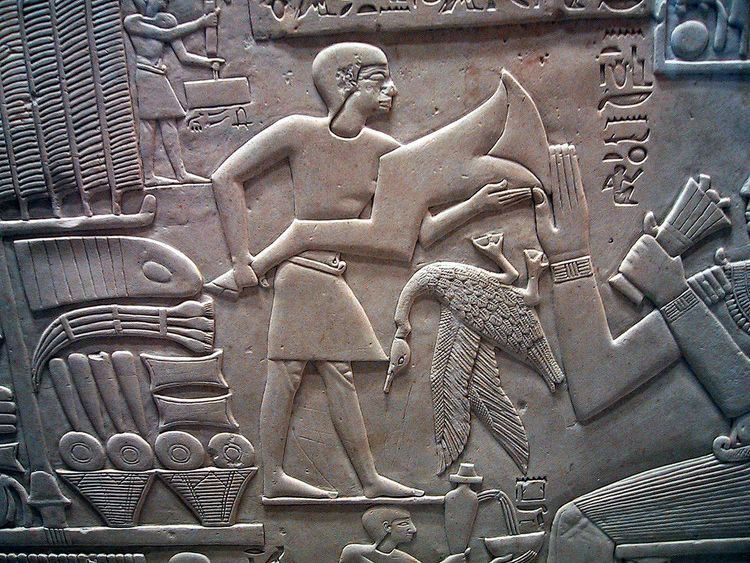 | ||
The foreleg of ox (a foreleg with the thigh) hieroglyph of Ancient Egypt is an old hieroglyph; it even represented a nighttime constellation (the Big Dipper, Maskheti). It came to have many uses in Ancient Egypt over three millennia.
Contents
Offered as "thigh-forward", "meat"
One of the major iconographic uses in Ancient Egypt of the ox-foreleg was as part of the food offering to the individual being honored (the deceased), and engraved upon their steles. Often, besides lying on the top of the pile of food offerings, it is shown being presented to the honored individual, thigh first.
Offered as "hoof-forward", "strength"
Iconographically used as the symbolism of strength, power, dominion.
List of uses
A list of uses for the foreleg hieroglyph, with no order of importance actually implied:
Rosetta Stone
Though the foreleg is not used in the Rosetta Stone directly, the ('khepesh')-strength of the scimitar is. In line R-6: "... and a statue of the god of the city, giving to him-(pharaoh Ptolemy V), a "sword royal"-("khepesh nesu") of victory"; the word khepesh-(hieroglyphs) uses the Scimitar (hieroglyph) as the determinative. The quote is part of the ten rewards to be given to Pharaoh Ptolemy V in the Rosetta Stone.
